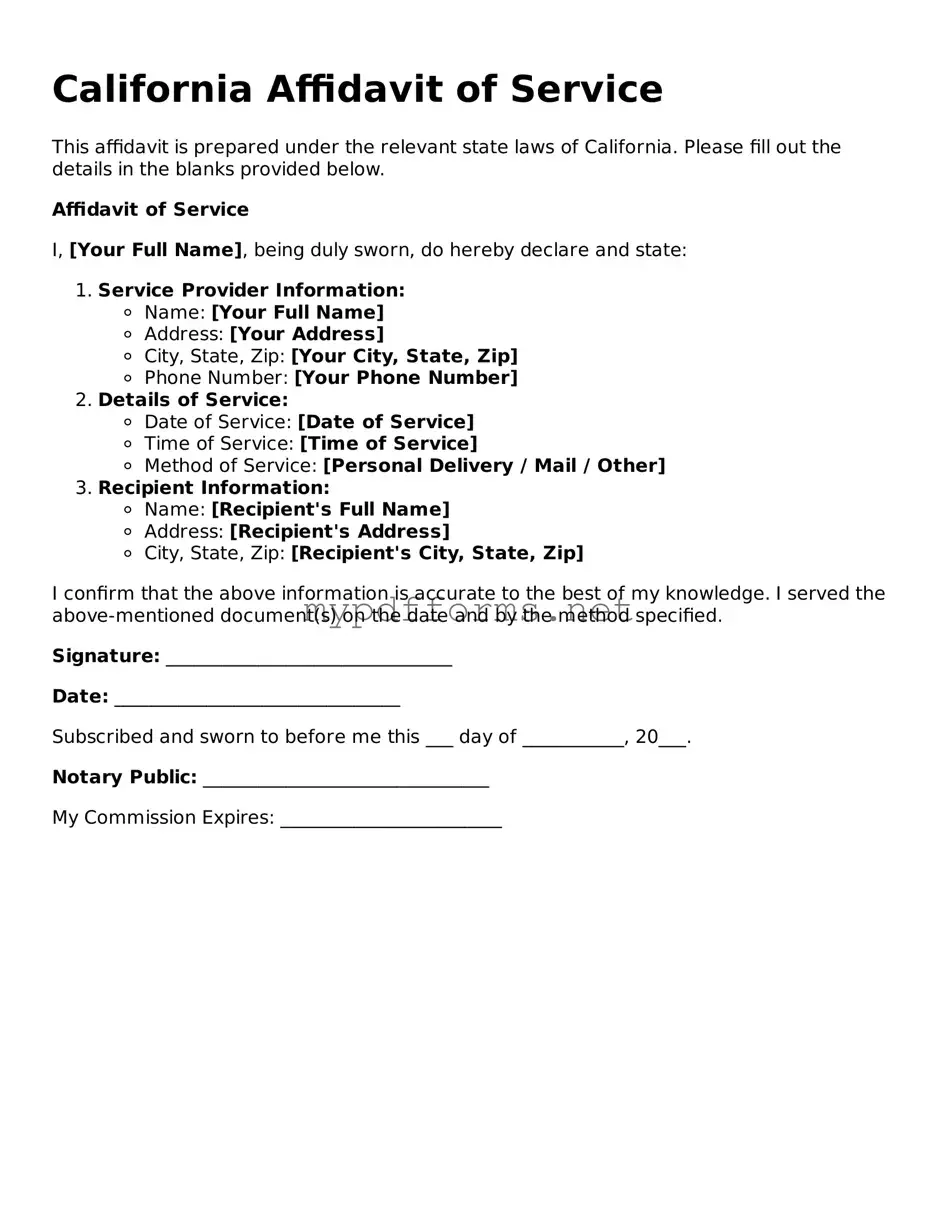Attorney-Verified Affidavit of Service Document for California
The California Affidavit of Service form is a legal document that confirms a person has been served with court papers. This form plays a crucial role in ensuring that all parties involved in a legal proceeding are properly notified. Understanding how to complete this form accurately is essential for upholding the integrity of the legal process.
Ready to fill out the California Affidavit of Service form? Click the button below to get started!
Modify Document Here
